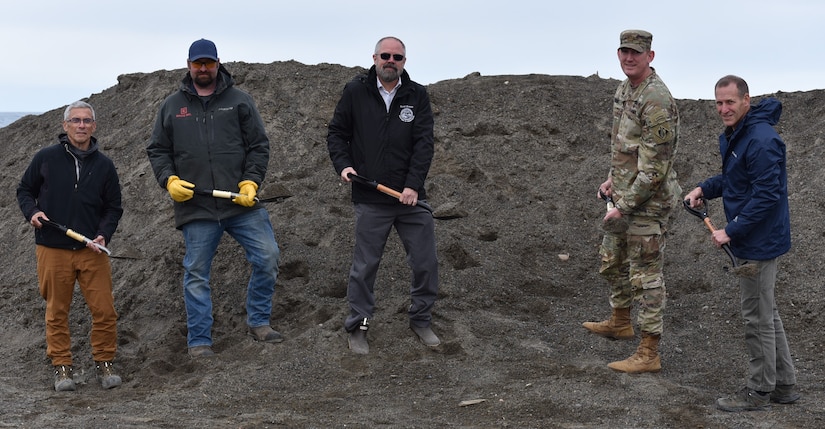“Management is doing things right; leadership is doing the right things.”
— Peter F. Drucker
THE ART OF LEADERSHIP
Right Things First
Effectiveness Before Efficiency: Choose Direction, Then Execute Well
Leadership begins with choice, not charisma. Management improves speed; leadership decides the destination. Doing things right is efficiency. Doing the right things is effectiveness, the route to results. The leader’s first task is to define what business we are in and what we are not. That requires systematic abandonment of activities that waste resources. If everything is a priority, nothing is.
Choose the right things by looking outside first. Start with the customer and the constraints. Concentrate resources where a unique contribution is possible. Knowledge workers need clear objectives and broad responsibility, focusing on autonomy, not supervision. Allocate people to opportunities, not problems. What you stop doing often matters more than what you add, for sustained competitive advantage.
Finally, convert direction into commitments. Put names, dates, and measures on each decision. Create feedback that reports on results, not activity. When evidence contradicts opinion, revise the plan. The leader’s calendar is the strategy. Fill it with the right things, and the organization will do things right.
Define priorities, abandon low-value work, set measures, align calendars, and execute customer-centered commitments daily with discipline.
COMMERCIAL CONSTRUCTION
Michigan Spark: Shaw Powers Megaprojects
Elite contractor scales healthcare, industrial, and education builds
Shaw Electric powers Michigan’s most demanding projects for healthcare, research, industrial, commercial, and water‑wastewater clients. As one of the state’s largest electrical contractors, the Southfield team delivers projects under design-build, design-assist, and lump-sum models, pairing smart preconstruction with field execution that protects schedules, safety, and compliance. The ethos: passion, partnership, and pride, is translated into dependable results.
That approach is evident in marquee projects, including the University of Michigan’s Crisler Arena and football stadium, the Detroit Public Safety Headquarters, and upgrades to central downtown offices. Industrial work spans the Ann Arbor Wastewater Treatment Plant, Consumers Energy’s Ray Compressor Station, the Gordie Howe International Bridge program, and auto manufacturing lines, including Jefferson North. Healthcare highlights include C.S. Mott Children’s Hospital and McLaren Greater Lansing Hospital, while higher‑education and research work reaches MSU’s Facility for Rare Isotope Beams.
By concentrating on complex building types and proven delivery methods, Shaw helps owners secure resilient power, future‑ready systems, and lasting, measurable value across campuses, factories, and civic infrastructure.
INFRASTRUCTURE INDUSTRY
Arctic Town Builds Storm Shield
Utqiaġvik Breaks Ground on Lifesaving Coastal Erosion Barrier
Drums and excavators marked Monday’s ceremony in Utqiaġvik, where the U.S. Army Corps of Engineers and the North Slope Borough broke ground on a coastal‑erosion defense. The project will reduce storm damage along about five miles of shoreline with a rock revetment, a protective berm, and a raised Stevenson Street.
The USACE states that construction began in July, when the first shipment of armor rock arrived by barge from Nome. Groundbreaking formalized a multi‑year build targeting completion in fall 2033, sequencing shoreline work to stay ahead of autumn storms. Crews will stage equipment on the bluff, install revetment layers, and regrade low‑lying roadway sections.
Officials framed the effort as essential for climate resilience in the hub of Alaska’s North Slope, where repeated surges have threatened public safety, economic activity, access to subsistence areas, and more than $1 billion in critical infrastructure. Residents welcomed the start, seeing visible progress that promises steadier emergency access, safer travel, and stronger protection for homes and cultural resources.
RESIDENTIAL RESEARCH
Permits Plunge, Apartments Quietly Rise
Builders Brace As Single-Family, Multifamily Strengthens
Fresh permit data show a widening split: single‑family permits fell for six straight months, while Multifamily ticked up. Through June, 485,935 single-family permits were issued nationwide, down 5.6% from a year earlier, while multifamily permits reached 244,812, up 2.9%. Analysts cite affordability stress, credit constraints, and builders working off inventories.
Single‑family rose only in the Midwest (+1.8%), while the South (‑6.5%), West (‑8.1%), and Northeast (‑1.7%) retreated. Ten states produced 63% of the nation’s single‑family permits. Texas led at 78,104 (-8.0%), followed by Florida (-10.6%) and North Carolina (-0.9%) in Multifamily. Multifamily momentum concentrated in Florida (+25%), Texas (+14.1%), and California (+11.5%) as metros advanced infill.
For crews and buyers, the read-through is practical: expect more townhomes and apartments, while entry-level detached starts proceed cautiously in most markets. Purchasing teams are holding shorter bid windows, pairing escalators with hedging, and courting lenders as effective AD&C rates remain high. A late‑summer Fed cut could ease construction financing, but demand will hinge on mortgage moves.
TOOLBOX TALK
The Importance of Rigging Gear Inspection (Slings, Shackles & Hooks)
Introduction
Good morning, Team! Today’s toolbox talk covers rigging gear inspection. Safe lifts start on the ground with sound slings, shackles, and hooks.
Why It Matters
A single rigging failure can drop tons of steel or precast, causing fatalities, severe injuries, and significant damage.
Strategies for Rigging Safety
Inspect Every Time –
Web slings: cuts, abrasion, melted “glazing,” broken stitching, illegible tags.
Wire rope: kinks, birdcaging, broken wires, crushed spots, corrosion.
Chain: stretched or cracked links.
Hooks/Shackles: bent bodies, spread throats, missing latches, damaged threads/pins. Tag‑out rejects immediately.
Use the Right Gear – Check the Working Load Limit (WLL) with the sling angle factored in. Use the correct shackle pin (no bolts/rod). Never side‑load a shackle.
Protect Edges – Pad sharp corners with softeners/guards; never knot a sling; avoid pinch points and twisting.
Attach & Balance – Center the hook, equalize multi‑leg slings, keep legs free of twists, and confirm latches close.
Prove the Lift & Control the Zone – Test‑lift a few inches, verify balance, use tag lines, and keep everyone clear of the fall zone.
Discussion Questions
Where do we stage corner protection and store/tag‑out rejected slings?
Which picks today need reduced sling angles or different hardware?
Conclusion
Inspect, select, protect, and verify the rigging before lifting.
If in doubt, tag it out!








